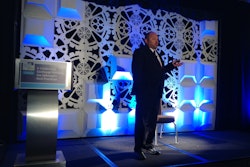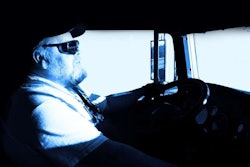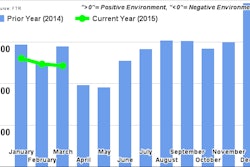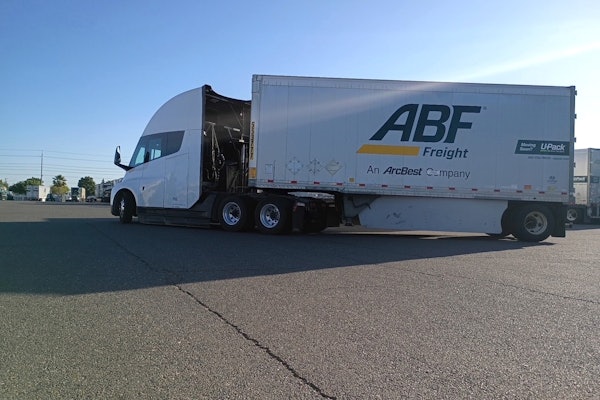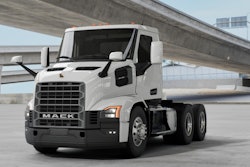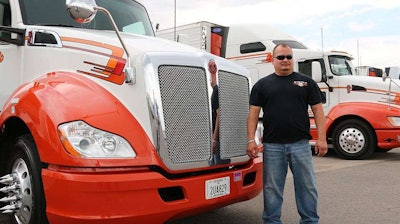 Navajo Express is using technology to identify the types of drivers that are more likely to stay and succeed at the company, and tailor its recruiting efforts accordingly.
Navajo Express is using technology to identify the types of drivers that are more likely to stay and succeed at the company, and tailor its recruiting efforts accordingly.Remember when drivers streamed into your office and congested your 1-800 number to apply for jobs? Recruiting was never that easy, but it might seem so compared to the present situation, and the future doesn’t look any better.
The trucking industry could immediately fill 30,000 driving positions. Carriers also will need to fill 100,000 positions every year for the next decade to keep up with freight volumes and to replace drivers leaving the workforce, estimates the American Trucking Associations.
The severity of the driver shortage is compounded by the fact that only a small fraction of applicants are qualified to work. To compete for this small pool, a growing number of fleets are using technology to streamline the recruiting and hiring process.
“We have definitely become a more analytical company,” says Collin Varner, director of marketing for Navajo Express, a refrigerated carrier with 1,000 trucks based in Denver, Colo., that specializes in grocery store deliveries. “The industry is very competitive and we need to make sure we are using our money and spends to attract new drivers in the most effective way.”
Navajo Express works with an ad placement agency to generate leads. All drivers that apply use its online application. Its recruiters can immediately get to work completing the remaining steps to qualify and hire applicants using a web-based software system from Tenstreet.
The company is analyzing the data from its ad agency, from Tenstreet and its internal HR systems to improve on its strategies for recruiting and retaining drivers. One purpose of the analysis is to identify the profile of drivers who are most likely to stay and succeed for a long term, Varner says. It can then target its marketing efforts to these drivers.
Navajo Express is one of many fleets that use advanced technology to improve the speed and quality of recruiting to achieve a greater goal: a seamless onboarding process for new drivers that helps keep them longer.
Speedy qualifications
In October, 2013, TransAm Trucking began using a web-based system from EBE Technologies called SHIPS Recruiting. Previously, driver applicants would fill out a standard form that recruiters printed out and reviewed manually.
To keep track of the tasks in its driver qualifications process, recruiters used basic tools like spreadsheets and e-mail, says Ron Crum, applications manager for the Kansas City, Mo.-based refrigerated carrier with 1,000 trucks.
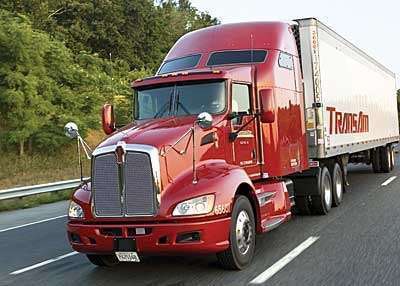 TransAm Trucking is using the SHIPS Recruiting software from EBE Technologies to process driver applications more efficiently.
TransAm Trucking is using the SHIPS Recruiting software from EBE Technologies to process driver applications more efficiently.TransAm has since been using an online driver application from EBE. Drivers access the mobile job application from the company’s website, from job boards and other online media where TransAm advertises.
Responses to certain questions, like a driver’s work experience, determine if the applicant meets the minimum standards. The software disqualifies about 15 percent of job applicants that do not meet its hiring standards. Overall, the company is hiring about four percent of applicants, Crum says.
Applicants that pass the first level of qualifications are immediately assigned to a recruiter within the SHIPs software. The applicant shows up on a recruiter’s dashboard and workflow guides the recruiter through the next steps.
“What ends up in the recruiter’s dashboard are the ones who are actually qualified,” he says. “We can then start working with (drivers) on an individual level.”
Automating the first-level of qualifications has made recruiters more efficient, he says, and the workflow holds them accountable and prioritizes their time. For instance, drivers that apply through the company website are top priority, he says, as they generally provide more information and are specifically interested in a TransAm job.
TransAm has about seven different workflow tasks. When recruiters reach the point of ordering an MVR and employment background report, a mouse click submits an order to HireRight.
When recruiters make an employment offer, they use the software to schedule the driver in for orientation and order Greyhound bus tickets to one of its terminals. Drivers can check on the status of their application at any time by logging into the portal.
When drivers are hired, all information obtained in the recruiting process is passed to TransAm’s mainframe system automatically. If a driver quits or is terminated, fleet managers mark if the driver is eligible for rehire, bringing the driver back into the SHIPS Recruiting database. The software has features to create automated e-mails to the driver and reminders for recruiters to follow up.
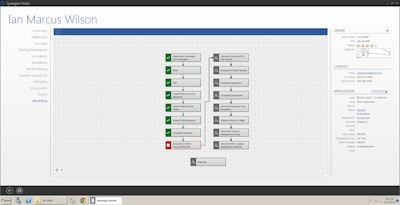 The TMW Synergize recruting software has a driver workflow and process checklist associated with the applicants. This workflow is fully configurable to the company standards and business rules.
The TMW Synergize recruting software has a driver workflow and process checklist associated with the applicants. This workflow is fully configurable to the company standards and business rules.TMW Systems has software products that span the entire lifecycle of asset and driver management. Through a partnership with Microdea, it offers the Synergize driver recruiting software.
Synergize began as an imaging workflow and process automation tool. About three years ago, TMW developed the additional capabilities for managing the entire recruiting and hiring process, says Jay Duquette, sales engineer for TMW Synergize. The system is being used by about 20 fleets today.
The software has an online job application, workflow tools and integration with third parties to order background and MVR records. Fleets can use graphical design tools such as flow charts to customize the workflow to reflect their own business rules and steps, he says.
TMW Synergize software has the ability to capture an electronic signature from drivers when they fill out an online application. Tenstreet and EBE have this capability as well.
One of its unique features is the integration with TMW’s operations software — TMW Suite, TruckMate and the Innovative product lines. The bi-directional flow of information is helpful for creating reports to identify markets where the fleet’s best drivers are coming from, for instance.
When drivers are hired, fleets can automatically create a “new driver” status in TMW Suite, for example, to bring visibility to fleet managers to help accommodate drivers during their first days and weeks on the job, he says.
Next up: how to use technology to find and recruit drivers in the digital age




